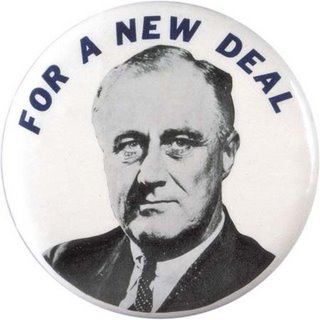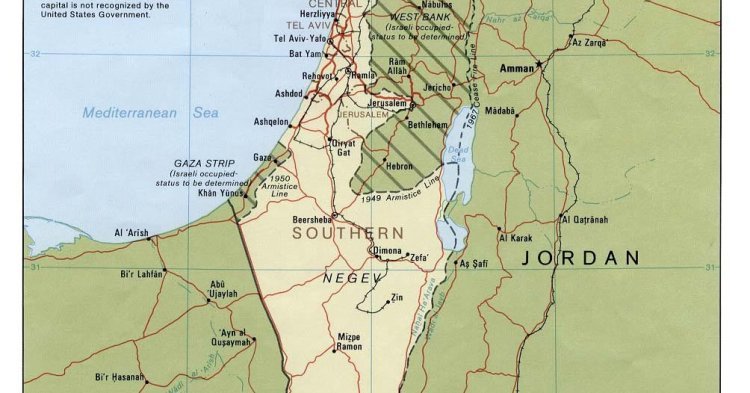On 24 June, there were three rockets fired from Gaza on the Israeli border town of Sderot causing no injuries but constituting a breach in the five-day truce. Islamic Jihad claimed responsibility for the attack saying it was an answer to the Israeli military raid in the West Bank city of Nablus in which two Islamic Jihad members were killed.
A Fragile Truce
The truce agreement is meant to apply only to Gaza and not to the Fatah-led West Bank. However, events in the West Bank will inevitably color the nature and durability of the truce. Some non-Hamas groups active in Gaza, such as the Islamic Jihad and the Al Aksa Martyrs Brigades have said that they will retaliate from Gaza if there are attacks against them in the West Bank.
it is important to structure the truce with some bold steps to restore the economy
There are those who think that the truce is only a cover for other motivations. Some believe that Hamas will use it to increase its military strength. Others believe that the failure of the truce would give legitimacy to Israel for a major military move into Gaza. Thus, it is important to try to structure the truce with some bold steps to restore the economy, to offer possibilities for a better life in Gaza, and to break the cycle of violence and counter-violence.
Despite the fragile nature of the truce, after a year-long economic embargo, frequent Israeli air strikes and incursions, and a steady rain from Gaza of rocket fire on near-by Israeli cities, the truce opens some doors for creative action.
Measures to re-establish and develop the economy of Gaza are important as the embargo has crippled and in some cases destroyed manufacturing and agriculture, much of which was destined for the Israeli market. The Gaza Strip is 25 miles long and 6 miles wide with some one and a half million people who depend on imports for most basic goods and on export for livelihood. The Israeli blockade has led to a very difficult economic and social situation in Gaza with high unemployment, poor health facilities, a lack of food and other basic supplies.
There is also a need to break the psychological barriers which can be overcome by cooperative economic measures. A possibility for socio-economic recovery of Gaza would be a trans-national economic effort that would bring together energy, knowledge and money from Gaza, Israel, the West Bank and Egypt .
The Tennessee Valley Authority: a Model for Gaza
A possible model is the trans-state efforts of the Tennessee Valley Authority (TVA) of the US New Deal. The TVA was a path-making measure to overcome the deep economic depression of the 1930s in the USA. In May 1933, the Roosevelt administration and the Congress created the TVA. In his message to the Congress, Roosevelt suggested that the Authority should be a “corporation clothed with the power of Government but possessed of the flexibility and initiative of a private enterprise. It should be charged with the broadest duty of planning for the proper use, conservation and development of the natural resources of the Tennessee River drainage basin and its adjoining territory for the general social and economic welfare of the Nation…This in a true sense is a return to the spirit and vision of the pioneer. If we are successful here, we can march on, step by step, in the development of other great natural territorial units.”

The main idea behind the concept of TVA was that it was supposed to do different things, all connected to each other through the concrete realities of a damaged river full of damaged people. To do all these well, it had to be a public corporation: public, because it served the public interest and a corporation rather than a government department, so that it could initiate the flexible responsible management of a well-run private corporation. As Stringfellow Barr wrote in Citizens of the World “The great triumph of the TVA was not the building of the great dams. Great dams had been built before. Its greatest triumph was that it not only taught the Valley people but insisted on learning from them too. It placed its vast technical knowledge in the pot with the human wisdom, the local experience, the courage, and the hopes of the Valley people, and sought solutions which neither the Valley folk nor the TVA technicians could ever have found alone. It respected persons.”
only a New Deal is likely to break the cycle of violence and counter-violence
The Gaza strip is not one of the greatest natural territorial units of the world, and respect for persons has been in short supply. However, only a New Deal is likely to break the cycle of violence and counter-violence. A Gaza Development Authority, an independent socio-economic corporation devoted to multi-sector and trans-national planning and administration would be an important start in a new deal of the cards. Such a Gaza Development Authority would obviously have Hamas members but also persons chosen for their expertise as well as persons from community organizations.
The Israeli-Hamas truce must be accompanied by strong socio-economic structures which can hold during periods of inevitable future tensions. A Gaza Development Authority can be a framework for these strong follow up measures to the truce.


Follow the comments: |
|
